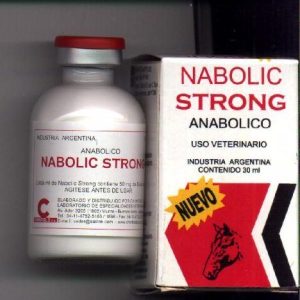Steroids Use in Greyhounds Racing
Steroids Use in Greyhounds Racing
Greyhound racing has long been a popular sport enjoyed by millions worldwide. Known for their speed, agility, and competitive spirit, greyhounds are bred and trained meticulously to excel on the racetrack. However, behind the scenes, there exists a controversial aspect that has raised ethical, health, and legal concerns: the use of steroids in greyhounds racing.
In this comprehensive guide, we delve into the complex issue of steroids use in greyhounds racing. We explore what steroids are, how they are used, their effects on canine health, the ethical debates surrounding their use, legal implications, and the ongoing efforts to curb doping in the sport. Whether you're a racing enthusiast, a veterinarian, a dog breeder, or a concerned animal welfare advocate, this article aims to provide an in-depth understanding of this critical subject.
1. Understanding Greyhound Racing
Greyhound racing is a competitive sport where dogs race around a track, typically over distances ranging from 300 to 1000 meters. The sport has roots dating back centuries and has evolved into a popular betting activity in countries such as the United States, the United Kingdom, Australia, and Ireland.
The Training Regimen
Greyhounds undergo rigorous training to optimize their speed, endurance, and agility. Trainers often focus on diet, conditioning, and mental preparation. However, in pursuit of victory, some may turn to illegal or unethical means to gain an edge, including the administration of performance-enhancing drugs.
The Ethical Debate
While supporters argue that greyhound racing is a thrilling sport that showcases the breed's natural talents, critics raise concerns about the welfare of racing dogs, especially when doping practices are involved. Horse care
2. What Are Steroids? An Overview
Steroids, specifically anabolic-androgenic steroids, are synthetic substances modeled after testosterone, the primary male sex hormone. They have legitimate medical uses but are also misused to enhance physical performance.
Types of Steroids
- Anabolic Steroids: Promote muscle growth, increase strength, and improve recovery.
- Androgenic Steroids: Affect male traits; often included in anabolic steroids.
Medical Uses in Canines
In veterinary medicine, steroids are used to treat inflammation, immune disorders, and certain diseases. However, their misuse in sports is a significant concern.
3. Why Are Steroids Used in Greyhounds Racing?
The primary motivation behind using steroids in greyhounds is to improve athletic performance. Benefits sought by trainers and owners include:
- Enhanced Muscle Mass: Leading to increased strength and power.
- Faster Recovery: Reducing downtime after injuries or intense training.
- Increased Endurance: Allowing dogs to maintain speed over longer distances.
- Aggressiveness and Focus: Improving drive and concentration during races.
While these benefits can provide a competitive advantage, they come at significant ethical and health costs.
4. Types of Steroids Commonly Used
Various anabolic steroids are used illicitly in greyhound racing. Some of the most common include:
- Stanozolol (Winstrol): Popular for its performance-enhancing effects and relatively low detection time.
- Boldenone (Equipoise): Known for increasing muscle mass and stamina.
- Nandrolone (Deca-Durabolin): Used for muscle growth and recovery.
- Methandrostenolone (Dianabol): Enhances muscle size and strength.
- Oxymetholone (Anadrol): Potent anabolic effects.
These substances are often administered via injections, oral pills, or topical forms, depending on the substance and the trainer's preference.
5. Methods of Steroid Administration
Steroids can be administered through various routes:
- Injectable Forms: Intramuscular injections are common for sustained release.
- Oral Tablets or Liquids: Easier to administer but may have shorter effects.
- Topical Gels or Creams: Applied directly to the skin, though less common in veterinary use.
The timing and dosage are critical factors that influence both effectiveness and detection.
6. Effects of Steroid Use on Greyhounds
Physiological Impact
- Muscle Hypertrophy: Increased muscle size leads to higher power output.
- Enhanced Recovery: Quicker healing from injuries.
- Altered Metabolism: Changes in energy utilization.
- Aggressiveness: Possible increase in aggression and focus.
Health Risks and Side Effects
Despite performance benefits, steroids pose significant health risks to greyhounds:
- Liver Damage: Due to the metabolic burden.
- Cardiovascular Issues: Elevated blood pressure and potential heart problems.
- Hormonal Imbalances: Disruptions in natural hormone production.
- Behavioral Changes: Increased aggression or anxiety.
- Joint and Tendon Damage: From rapid muscle growth.
Prolonged or high-dose use can lead to chronic health issues and even death.
7. Legal Status and Regulations
The use of steroids in greyhound racing is illegal in many jurisdictions. Regulatory bodies have established strict anti-doping laws, including:
- Sample Testing: Random and targeted testing of racing dogs.
- Sanctions: Disqualification, fines, bans, and criminal charges.
- Detection Methods: Gas chromatography-mass spectrometry (GC-MS), urine and blood tests.
However, enforcement varies globally, and illegal doping remains a persistent issue.
8. Ethical Concerns and Animal Welfare
The use of steroids raises profound ethical questions:
- Animal Welfare: Doping can cause pain, suffering, and health deterioration.
- Fair Competition: Steroid use undermines the integrity of racing.
- Consent: Dogs cannot consent to drug administration.
- Public Perception: Doping scandals damage the sport’s reputation.
Many animal welfare organizations advocate for stricter regulations and outright bans on performance-enhancing drugs.
9. Detection and Testing for Steroids
Advancements in testing technology have improved the detection of steroids:
- Urinalysis: The most common method, detecting synthetic substances and their metabolites.
- Blood Tests: Used to identify hormonal imbalances.
- Biological Passport: Monitoring individual dogs over time for abnormal biomarker levels.
Despite these measures, some trainers attempt to evade detection through masking agents, microdosing, or using designer steroids.
10. Case Studies and Incidents
Numerous cases have highlighted the dark side of steroid use in greyhound racing:
- High-Profile Doping Scandals: Leading to suspensions and criminal charges.
- Injuries and Deaths: Linked to steroid overdoses.
- Regulatory Crackdowns: Increased testing and legal actions in various countries.
For example, in the UK, several greyhounds tested positive for banned substances, leading to investigations and stricter enforcement.
11. Efforts to Combat Steroid Use
Various organizations and authorities are working to eliminate doping:
- Regulatory Agencies: Implementing stricter testing protocols.
- Technological Advances: Developing more sensitive detection methods.
- Education Campaigns: Informing trainers and owners about the risks and legal consequences.
- Whistleblower Incentives: Encouraging reporting of doping practices.
- Animal Welfare Legislation: Enforcing bans and penalties.
Some regions have adopted DNA profiling to ensure race integrity and prevent doping.
12. Alternatives to Steroids
To improve performance ethically and safely, trainers are encouraged to:
- Optimize Training Regimens: Proper conditioning and rest.
- Improve Nutrition: Balanced diets tailored for racing dogs.
- Use Legal Supplements: Such as amino acids, vitamins, and minerals.
- Focus on Genetics: Breeding for stamina and speed.
- Implement Better Track Conditions: Ensuring safety and performance.
These approaches promote the health and well-being of greyhounds without compromising integrity.
13. Future Outlook and Recommendations
The future of greyhound racing depends on addressing doping issues transparently:
- Stricter Regulations: Enhancing detection and enforcement.
- Enhanced Welfare Standards: Prioritizing the health of racing dogs.
- Public Awareness: Building trust through transparency.
- Research and Innovation: Developing new methods to detect and prevent doping.
- Global Cooperation: Sharing information and best practices across borders.
The ethical treatment of greyhounds should be at the forefront of the sport’s evolution.
14. Conclusion
Steroids use in greyhounds racing remains a contentious issue that intertwines ethics, health, legality, and sport integrity. While the allure of improved performance drives some trainers to misuse these substances, the risks—both to the dogs' health and the sport’s reputation—are significant.
Efforts by regulatory bodies, veterinary experts, animal welfare organizations, and the racing community are essential to curb doping and promote a culture of fairness and compassion. Emphasizing ethical training, health, and welfare will ensure that greyhound racing can continue as a sport that celebrates the breed’s natural talents responsibly.
Remember: The welfare of greyhounds should always take precedence over winning at any cost.


Comments
Post a Comment